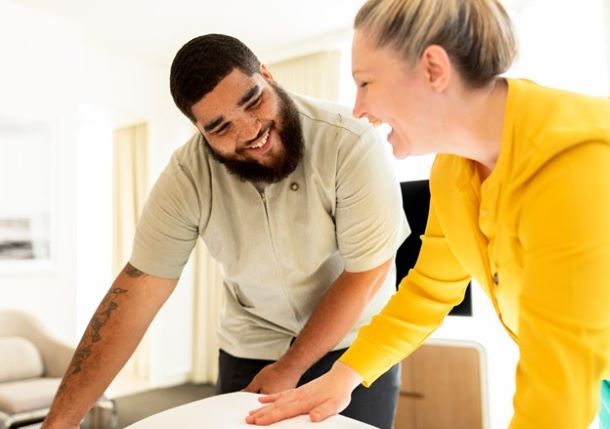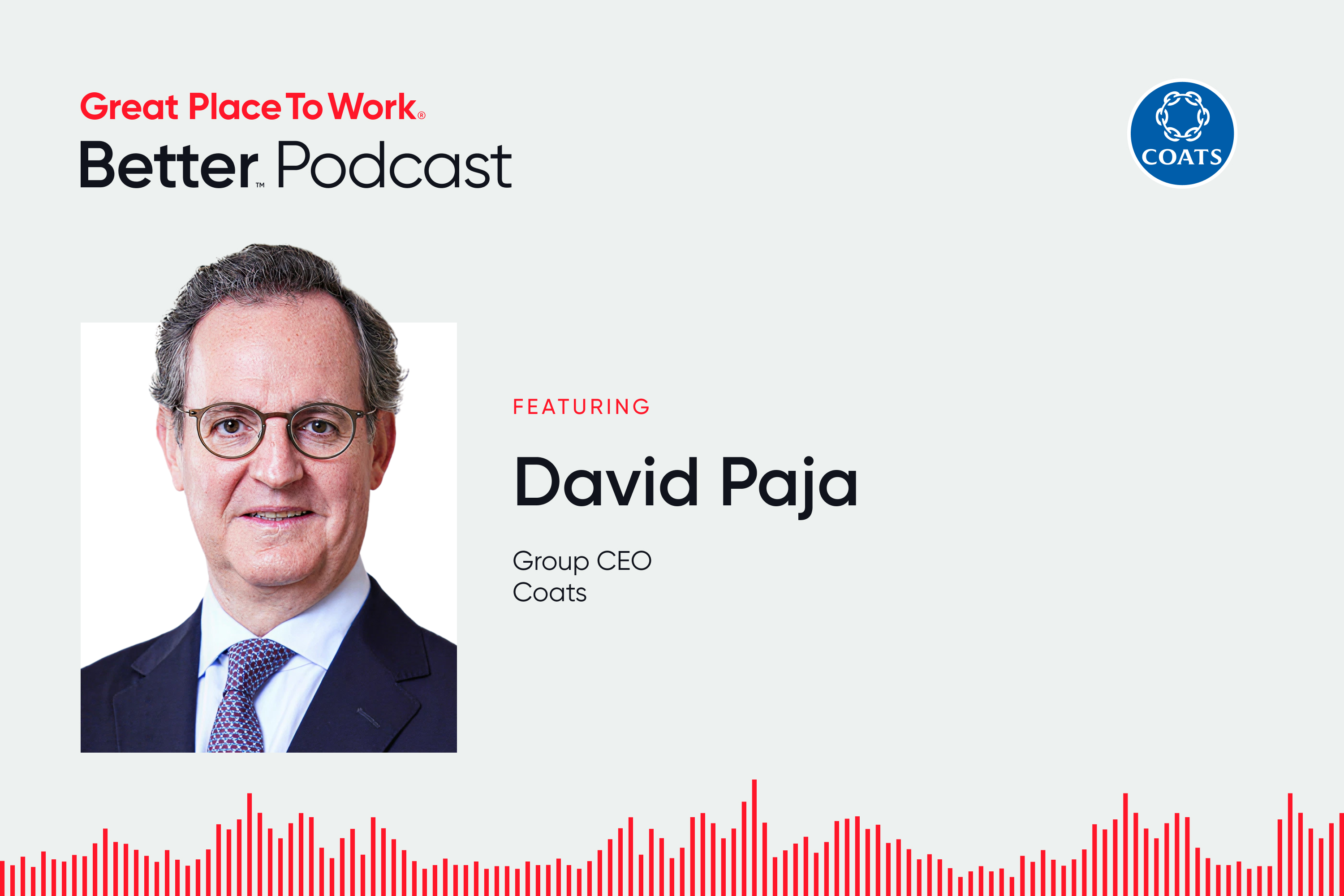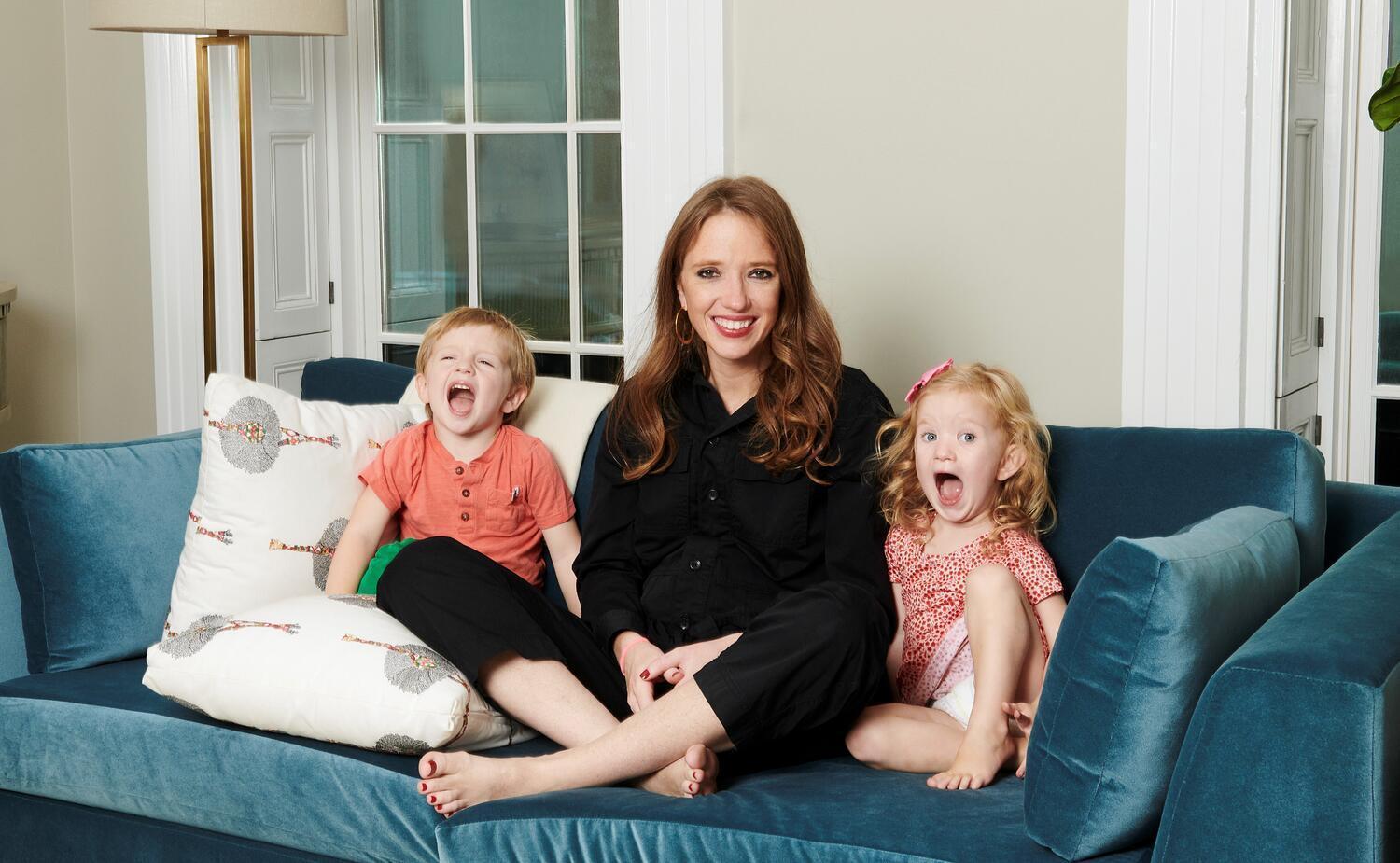Best Workplaces, Company Culture, Employee Well-being
How the hotelier hopes to make a difference for the 80% of its workforce with caregiving responsibilities.
The COVID-19 pandemic was strikingly successful in highlighting the many challenges employees face at work.
One of the many crises spotlighted was the plight of caregivers. The complexity of workers’ full lives was inescapable as spouses, children, and pets ambled through the backgrounds of video calls.
“The pandemic accelerated many conversations,” says Lora Lawler, senior vice president, HR consulting and total rewards at Hilton. “[It] created an openness to just having conversation because you can't ignore the dog, or the child — you name it. You just had more visibility to what was going on in people's life outside of work.”
For the global hotel chain, No. 2 on the Fortune 100 Best Companies to Work For® List in 2022 and No. 12 on the PEOPLE Companies That Care® List in 2022, the conversation around caregiving resonated immensely with its team members.
“As we were talking to team members, this topic of caregiving came up again and again,” says Amanta Mazumdar, vice president, U.S. benefits for Hilton. “Team members were struggling to not only find ways to care for their children, but also care for other loved ones in their lives, including parents, neighbors, and friends.”
A perfect storm
Caregiving burdens aren’t a new workplace issue, but the spectrum of challenges caregivers face have been on the rise.
Even before the pandemic, researchers identified a “caregiving crisis” hurting company profitability and employee productivity. As the needs of working parents became a common theme amid school closings and classroom outbreaks, other demographic forces were also at work.
More than half of Americans in their 40s are part of a “sandwich generation,” taking care of their children and aging parents simultaneously, according to Pew Research.
Those mounting responsibilities are taking a toll on workers — offering a unique opportunity for employers to intervene.
Hilton estimates that at least 80% of its workforce is impacted by caregiving — a more inclusive measure than just counting the number of employees who identify as caregivers — based on overlaying data from a Harvard 2019 study on caregiving onto Hilton’s demographic data.
“It’s probably higher,” Mazumdar says, “but conservatively, we think for at least 80% of our team members, caregiving impacts their ability to perform their best at work.”
The resource hub
Hilton, which historically has provided well-being care for employees, knew it needed to help.
The HR team had already seen success in offering a resource hub to address mental health challenges for team members through its Thrive at Hilton platform. Launched in 2021, the effort resulted in a 10 percentage point increase in reported comfort levels for workers discussing mental health with their managers, according to an internal survey.
The Hilton team therefore saw an opportunity to create a similar hub, Care For All, targeting caregivers — and made it available to everyone, not just Hilton team members.
“As we really thought about the impact that being a caregiver has on all parts of your life, this became a no-brainer for us,” says Lawler.
The team identified six caregiving scenarios it would support:
- Care for self
- Care for children
- Care for elderly
- Care for disabled
- Care for sick
- Care for pets
Caregiving resources have traditionally targeted parents with young children, but after talking to employees, the Hilton team saw a wider scope of needs for its workforce. They wanted to be inclusive and find ways to address the complex needs of individual workers.
“We heard a lot of people struggling with, ‘How do you help high school children get ready for college?’” Mazumdar offers as an example.
Although the majority of resources on the site are focused on the U.S., it tries to serve a global workforce by including resources for workers in Europe and Asia-Pacific.
“As we really thought about the impact that being a caregiver has on all parts of your life, this became a no-brainer for us.”
The site launched on June 21, 2022, and early results show that team members are eager to find resources and learn from their peers within the company. A tab that features videos of Hilton team members sharing their personal experiences as caregivers has been viewed the most.
Since then, the hub has been visited by nearly 4,000 team members in the month since launch. Caring for Self — a page of self-care resources for caregivers — has been the most popular of the six care categories, followed by Caring for Children, and Caring for Pets. The majority of traffic has come from the U.S., with the U.K. coming in second and China third.
As part of the platform, Hilton has also partnered with Wellthy, a service that is available to U.S. team members, and will roll out to the U.K. and Ireland in the third quarter this year. The service helps individuals with administrative and logistical support, connecting them with care services and tools.
Team members are currently using the service most for childcare and help with caring for aging parents, and feedback of users has been overwhelmingly positive
Lessons learned
You don’t have to be a global corporation to offer caregiving resources for employees. In fact, some of the most powerful things that Hilton does to support its workers don’t have a big price tag.
1. Find ways to share employee stories.
“Storytelling never requires a tremendous amount of investment,” says Lawler, and yet the impact of those stories is immense as video stories from employees have been the most popular click on the site.
2. Help curate publicly available resources.
Links to relevant nonprofits and freely available caregiving resources are another a cost-effective way to connect employees with tools. Employees might not get to these resources on their own, says Mazumdar, and linking to other organizations will save your HR team from having to reinvent the wheel.
3. Help managers recognize and acknowledge caregiving burdens, and give them resources to assist their teams.
Training managers on how to have constructive conversations around caregiving and work can have a big impact. Beyond trying to instill managers with more empathy for caregivers on their team, the trainings also focus on educating managers on the resources HR provides team members at Hilton.
“A lot of team members, they go to their managers to understand what’s available,” Mazumdar says. Fixing the communication breakdown with managers can make a big difference for almost no cost.
4. Focus on equity and inclusion.
For Hilton, this means encouraging partner Wellthy to create a Spanish-language landing page ahead of launch to serve Hilton’s Spanish-speaking U.S. team members. Hilton is also partnering with individual employee resource groups to meet more specific caregiving needs, such as neurodiversity and navigating Medicare.
Hilton’s leaders believe caregiving will remain an important topic for business leaders in the months and years ahead — and an important opportunity for employee branding and recruitment.
It’s also a way to show employees you care, not just tell them.
It’s often these moments, when Hilton supports employees during a moment of need—perhaps an extreme caregiving scenario that challenged their resolve—that are the stories employees tell about why they choose to stay at the company and recommend it to others.
And it’s moments like these, Lawler says, that makes Hilton’s team members not only want to join the company, but to stay and build their careers.
Measure what matters
Compare the experiences of your employees with the most credible benchmark data available. Get started here.











